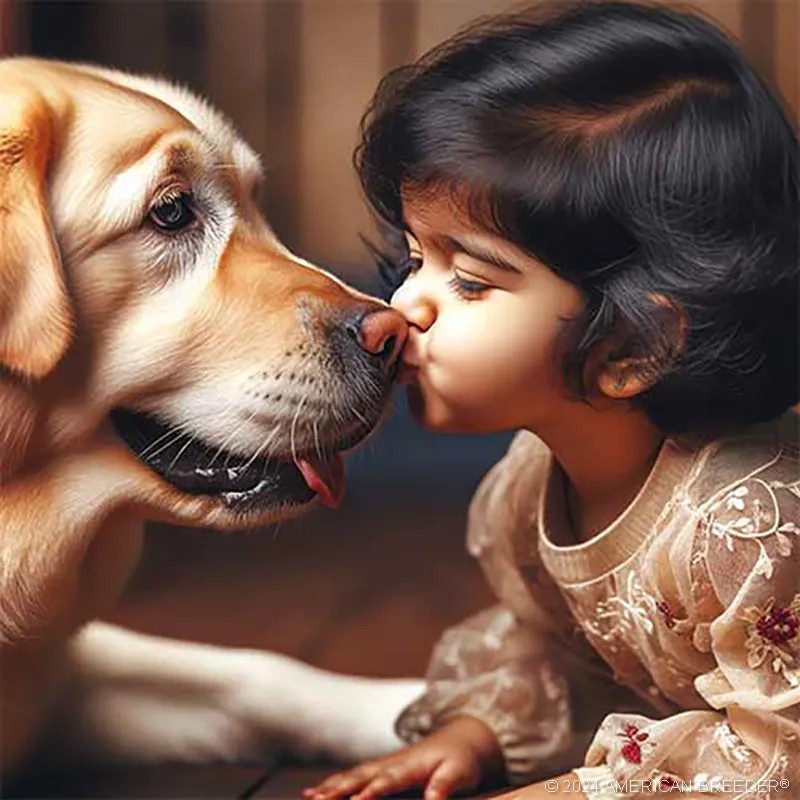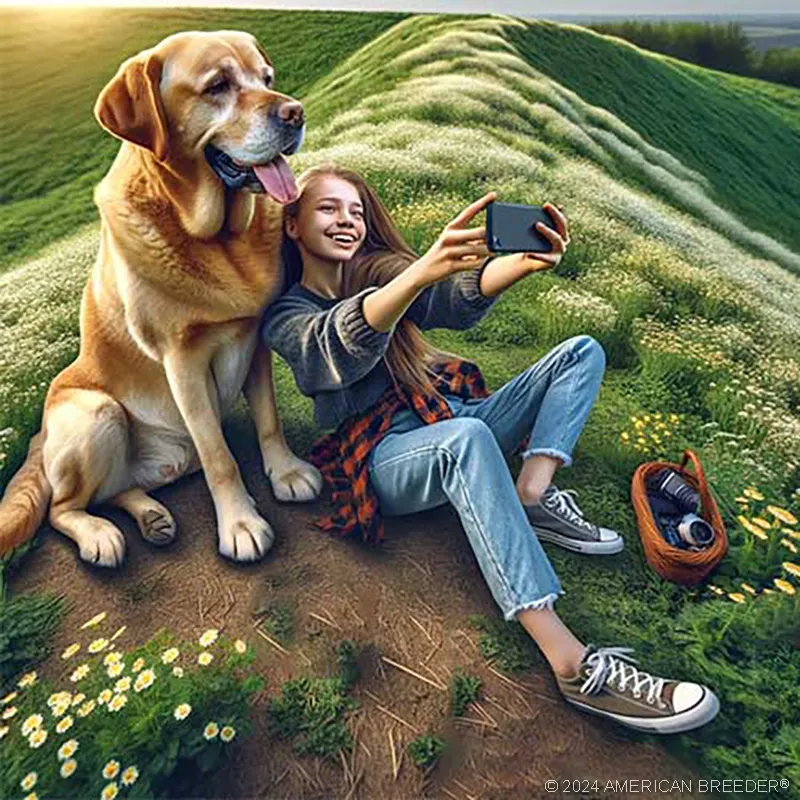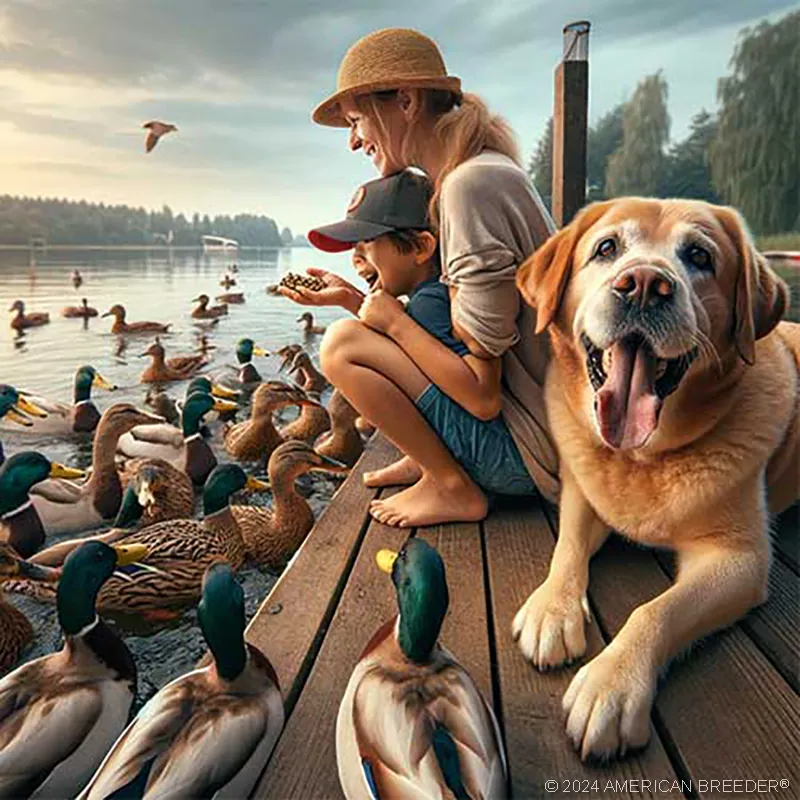The Gentle Giant: All About the Danish Broholmer Dog
 Introduction
Introduction
The Danish Broholmer Dog, also known as the Danish Mastiff, is a unique and fascinating breed that comes with a few important considerations. Before welcoming a Broholmer into your life, it's essential to understand their characteristics and needs. Interestingly, this breed is sometimes referred to as the "Gentle Giant" or "Dane of Broholm."
Breed Background and History
Originating in Denmark, the Broholmer Dog has a rich history that dates back several centuries. They were initially bred by Danish gamekeepers to protect estates and assist with hunting. These dogs were highly valued and even had royal patronage in the past.
Breed Characteristics
The Danish Broholmer is a large and powerful dog, with males standing at around 27.5 to 29.5 inches (70-75 cm) at the shoulder and weighing between 110 and 150 pounds (50-68 kg). They have a well-muscled and athletic build, featuring a broad head, expressive eyes, and a strong jaw. Their coat is short, dense, and typically comes in various shades of brindle, fawn, or black.
Temperament and Personality
Known for their gentle and affectionate nature, Broholmers make excellent family pets. They are loyal, calm, and patient, making them great companions for children. While they have a generally friendly demeanor, they can also be protective of their loved ones. Due to their size, early socialization and obedience training are crucial.
Trainability and Intelligence
The Broholmer is an intelligent breed that thrives on positive reinforcement training methods. They are eager to please their owners and are generally quick learners. Engaging their minds with mental stimulation and providing consistent training will help them reach their full potential as obedient and well-mannered companions.
 Health and Care
Health and Care
Like any other breed, the Broholmer is prone to certain health issues, including hip dysplasia and bloat. Regular exercise, a balanced diet, and routine veterinary care are essential for maintaining their well-being. While they have a short coat that requires minimal grooming, they do shed moderately.
Socialization and Compatibility
With their gentle and friendly nature, Broholmers generally get along well with children and other pets. Early socialization is vital to ensure they develop appropriate behaviors around strangers and unfamiliar situations. They can thrive in both single-dog households and multi-dog environments with proper introductions.
Living Arrangements and Environment
Despite their large size, Broholmers can adapt well to different living arrangements, including apartments or houses with adequate space. However, they do require regular exercise to stay healthy and mentally stimulated. A secure fenced yard is beneficial for their safety during outdoor playtime.
Training and Obedience
Basic obedience training is essential for any Broholmer owner. Teaching commands such as sit, stay, and recall will help maintain control over their sizable frame. They can also excel in advanced training activities such as tracking or search and rescue work, utilizing their intelligence and drive.
Financial Planning
When considering a Broholmer, it's important to budget for various costs, including adoption fees or purchase price, vaccinations, spaying/neutering, microchipping, food, grooming, veterinary care, training, toys, and supplies. Additionally, pet insurance can provide financial protection against unexpected medical expenses.
 Responsible Ownership and Ethical Considerations
Responsible Ownership and Ethical Considerations
Responsible ownership involves researching and choosing reputable breeders or considering adoption from shelters or rescues. Supporting ethical breeding practices and avoiding puppy mills is crucial to ensure the well-being of the breed. Understanding local regulations and legal obligations, such as licensing and vaccination requirements, is also essential.
Resources and Support
To provide the best care for your Danish Broholmer, it's important to have access to reliable resources and support. Local veterinarians who specialize in large breeds can offer valuable guidance on health care, vaccinations, and preventive measures. Trainers experienced with working breeds can assist with obedience training and behavior management. Grooming services familiar with handling large dogs can help maintain their coat and hygiene. Additionally, there are numerous online communities, forums, and educational materials dedicated to the Danish Broholmer, where owners can share experiences, seek advice, and learn more about the breed.
Conclusion
In conclusion, the Danish Broholmer Dog is a remarkable breed with its unique history, gentle temperament, and imposing presence. They make loyal and affectionate family pets, especially in households with children. However, their large size and protective instincts require responsible ownership, including early socialization, consistent training, and regular exercise. By providing the necessary care, love, and attention, you can enjoy a fulfilling companionship with this magnificent and friendly giant.
Danish Broholmer Dog Quick Reference Guide
 Breed Background: Origin: Denmark | Breed Purpose: Guarding and Farm Work | AKC Class: Foundation Stock Service | Year Recognized by AKC: Not AKC recognized
Breed Background: Origin: Denmark | Breed Purpose: Guarding and Farm Work | AKC Class: Foundation Stock Service | Year Recognized by AKC: Not AKC recognized
Appearance: Size: Large | Weight: 90-130 lbs | Coat Type: Short and Dense | Colors & Patterns: Fawn, Brindle, Black, or Blue | Distinctive Features: Muscular build, strong neck, hanging lips
Temperament: Energy Level: 3/5 | Loyalty: 5/5 | Friendliness to Pets: 4/5 | Friendliness to Strangers: 3/5 | Trainability: 3/5 | Playfulness: 4/5 | Frequent Barker: 2/5 | Chase Instincts: 3/5 | Sense of Smell: 4/5 | Drive to Hunt: 3/5
Health & Care: Health Issues: Hip Dysplasia, Bloat | Lifespan: 10-12 years | Grooming Difficulty: Low | Exercise Needs: Moderate to High
Socialization: Interaction with Children: Gentle and Protective | Interaction with Pets: Generally Good | Interaction with Strangers: Cautious | Elderly Compatibility: Affectionate | Ease of Training: Moderate
Suitable Living Arrangements: Apartment: No | House: Yes | Rural Area: Yes | Yard Size Requirements: Medium to Large Yard
Training & Obedience: Trainability: 3/5 | Intelligence: 4/5 | Obedience: 3/5 | Problem-Solving: 3/5 | Easily Stimulated: 3/5 | Focus Level: 4/5 | Easily Distracted: 2/5
Financial Planning: Typical Price Range: $1000 - $2000 | Initial Expenses: Puppy essentials, training | Ongoing Annual Expenses: Food, veterinary care
Breeding: Reproductive Maturity: 18-24 months | Litter Frequency: 1-2 litters per year | Litter Size: 5-10 puppies | Stud Cost: Varies | Breeding Challenges: Health screenings, careful matching
Did You Enjoy this Article? Share it and Help Us Spread the Word!
If you found this article helpful, we'd appreciate it if you could share it with your friends or link to it from your website, blog, or group! You can also use the convenient social share tabs on the left side of the screen to instantly share this page to your social media feed. For more ways to support and promote the American Breeder Community, visit our Share & Promote Together page for social media posts and memes you can copy and share. Your support means the world to us!
Disclaimer: The information provided in this article is for general informational purposes only and does not constitute legal, medical, financial, or professional advice. While we strive for accuracy, we make no representations or warranties regarding the completeness, accuracy, reliability, or suitability of the information. Please consult with a professional before making decisions based on the content provided. American Breeder Inc. assumes no responsibility for any errors or omissions or for the results obtained from the use of this information.
